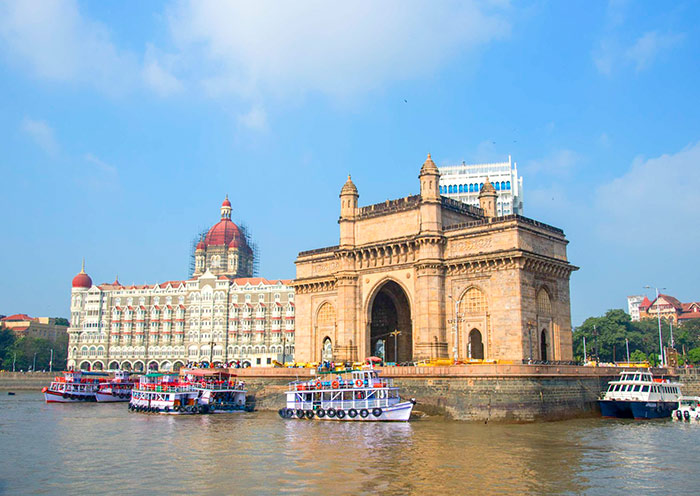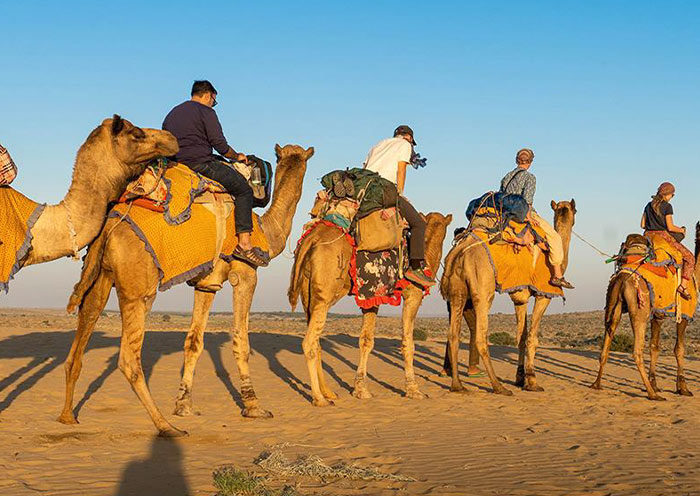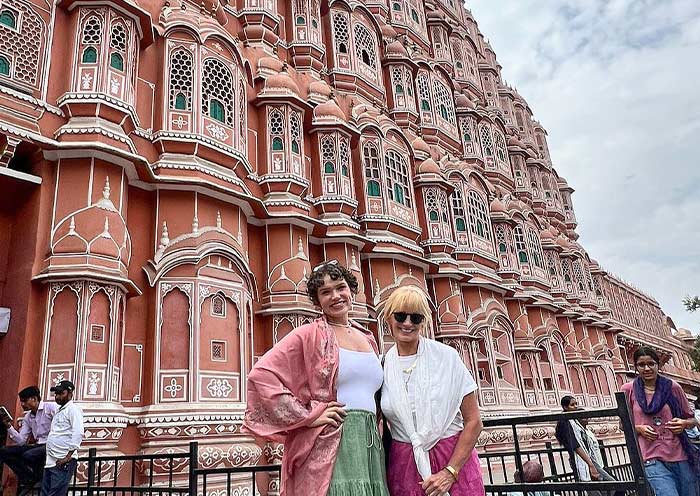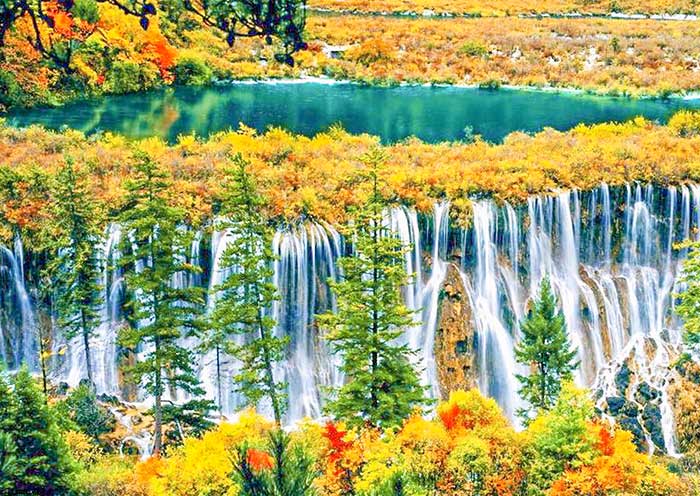Is India Safe to Travel?
Traveling in India, much like any other destination, comes with its own set of challenges and precautions. Generally, India is safe for tourists as long as they take the usual safety measures and are aware of their surroundings.
- Like many bustling countries, crowded cities can be hotspots for pickpocketing and petty theft, so it's important to keep your belongings secure and be cautious in busy areas.
- Female travelers should be particularly mindful of their safety and may prefer to avoid isolated areas or traveling alone at night.
- It's also wise to avoid tap water and street food that hasn’t been cooked or peeled to prevent stomach illnesses.
Engaging with reputable travel agencies, staying in well-reviewed accommodations, and respecting local customs and dress codes can further enhance your safety. As with any international travel, having comprehensive travel insurance is advisable. If these considerations are taken into account, many travelers have incredibly enriching and trouble-free experiences exploring the diverse and culturally rich landscapes of India.
Check more detailed information and tips in Is India Safe to Travel >>

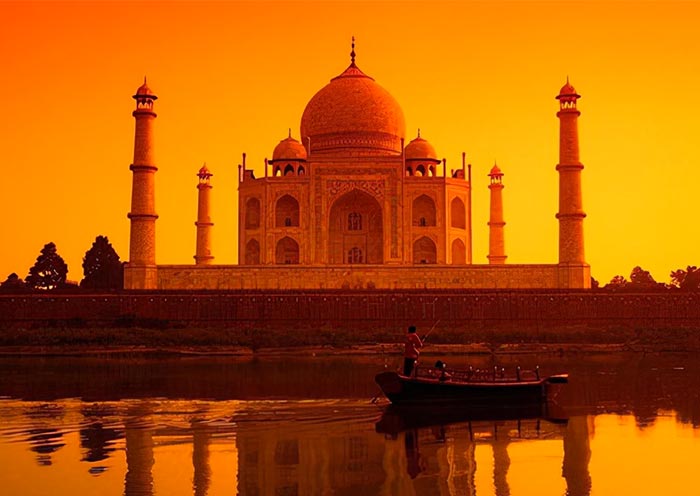
Tourist Places to Visit in India?
India is a treasure trove of tourist destinations, offering a wide array of captivating places to visit. Some are renowned for their splendid historical monuments and architectural wonders, such as Agra and Delhi, while others are famous for their religious significance, like Varanasi. Additionally, there are destinations that use colors to represent the unique temperament of the city, such as the Pink City of Jaipur, the Blue City of Jodhpur, the White City of Udaipur, and the Golden City of Jaisalmer. Let's explore these popular destinations in India.
Top1. Delhi - Amazing Capital City (1-2 days)
Delhi, the captivating capital city of India, is a vibrant blend of history, culture, and modernity. Divided into two distinct parts, Old Delhi and New Delhi, it offers a fascinating journey through time. As one of the cities in the famous Golden Triangle tourist circuit, Delhi holds a special place in the hearts of travelers.
Top Attractions: Red Fort, Jama Masjid, Chandni Chowk, India Gate, Qutub Minar, Humayun's Tomb
Check more about Delhi Attractions >>
Top 2. Agra - Home to Mysterious Taj Mahal (1 day)
Nestled 230 kilometers southeast of Delhi, Agra beckons travelers with its crown jewel, the Taj Mahal. Agra holds a significant place in the Golden Triangle tourist circuit, alongside Delhi and Jaipur. Prepare for a 4-5 hour drive from Delhi to Agra, and let the allure of the Taj Mahal and the mystique of Agra Fort transport you to a bygone era.
Top Attractions: Taj Mahal, Agra Fort, Itimad-ud-Daulah's Tomb
Check more about Places to Visit in Agra >>
Top 3. Jaipur - The Dreamy Pink City (1-2 days)
Located 280 kilometers southwest of Delhi, Jaipur, known as the Pink City, beckons with its enchanting allure. As one of the cities in the Golden Triangle tourist circuit, Jaipur offers a glimpse into the royal heritage of Rajasthan as its capital city.
Jaipur's pink-hued buildings and palaces add a dreamy charm to its streets. The city's rich history, vibrant culture, and architectural wonders make it a must-visit destination in India. Embark on a 5-6 hour drive from Delhi or Agra, and let Jaipur captivate you with its royal grandeur and irresistible charm.
Top Attractions: Amber Fort, City Palace, Hawa Mahal, Jantar Mantar, Elephant Riding
Check more about Places to Visit in Jaipur >>
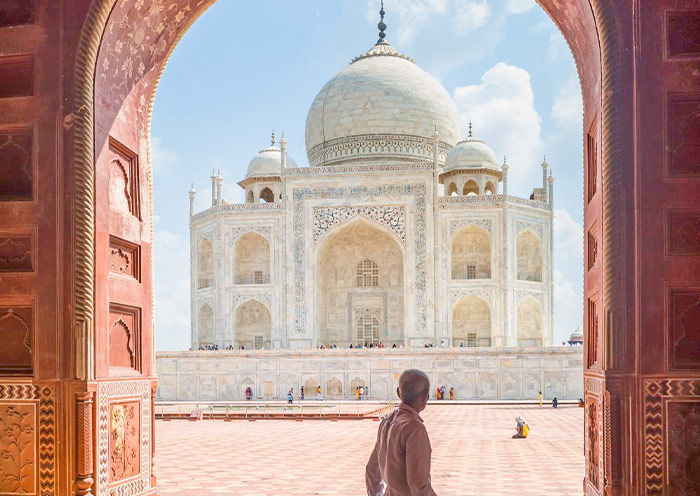

Top 4. Varanasi - Spiritual Serenity on the Ganges (1-2 days)
Varanasi is the spiritual heart of India, where the sacred Ganges breathes life into an ancient culture. Pilgrims perform rituals on the ghats, seeking liberation, while narrow alleys lead to centuries-old temples. The evening Ganga Aarti is a spiritual spectacle that transcends the senses. Varanasi is not just a city; it's an enduring expression of faith and tradition.
Top Attractions: Ganga Aarti ceremony, Boat ride on River Ganges during sunrise, Sarnath
Top 5. Udaipur - Romantic City of Lakes (1 day)
Udaipur, known as the City of Lakes, offers a romantic backdrop with its serene water bodies and majestic palaces. The Lake Palace in the middle of Pichola Lake is like a pearl on velvet, while the City Palace complex's grandeur tells tales of Rajput heroism. Udaipur is a canvas painted with the hues of history, romance, and the tranquility of its lakes.
Top Attractions: City Palace, Pichola Lake
Check more about Places to Visit in Udaipur >>
Top 6. Jodhpur - Majestic Blue City (1 day)
Jodhpur, the Blue City, is crowned by the imposing Mehrangarh Fort, which towers over a cluster of indigo houses. The fort's museum exhibits royal palanquins and armory, echoing past glory. Below, a tangle of medieval streets hosts markets teeming with textiles, spices, and handicrafts. The city's charm lies in its historic architecture and the warmth of its people.
Top Attractions: Mehrangarh Fort
Check more about Places to Visit in Jodhpur >>
Top 7. Mumbai - The Vibrant City of Dreams (1-2 days)
Mumbai, India's City of Dreams, pulses with unstoppable energy, located in south India. The Gateway of India stands as a symbol of colonial history, while the iconic Marine Drive offers sunset views against the Arabian Sea. Bollywood's glitz and glamour contrast with the Dharavi slum's industrious spirit. From the high-rise towers to the bustling street markets, Mumbai embodies ambition and resilience.
Top Attractions: Marine Drive, The Gateway of India
Top 8. Goa - Sun, Sand, and Serenity (1-2 days)
Goa is a coastal paradise where Portuguese influence meets Indian culture. Its sun-soaked beaches, such as Baga and Palolem, are perfect for relaxation and water sports. The historic churches of Old Goa bear witness to its colonial past, while spice farms and wildlife sanctuaries offer a glimpse into the region's biodiversity. Goa's laid-back yet vibrant lifestyle makes it an irresistible escape.
Top Attractions: Portuguese Churches, Beach


How Long to Stay in India?
For a first trip to India, I would recommend planning a travel length of at least one to two weeks. India is a vast and diverse country with so much to explore, and allocating sufficient time will allow you to experience the highlights of different regions and cities.
A 6-8 day itinerary is a fantastic option to embark on the classic Golden Triangle Tour, covering Delhi, Agra, and Jaipur. This popular route showcases the cultural and historical highlights of India. This 6-8 day itinerary will provide you with a glimpse into India's rich heritage, including its Mughal and Rajput architecture, vibrant markets, and cultural experiences. It's a perfect introduction to the Golden Triangle and will leave you with unforgettable memories of India's iconic destinations.
Check more one-week India Itinerary >>
A two to three-week itinerary will provide you with ample time to visit more popular destinations in North India and South India, such as Varanasi, and possibly include other cities like Udaipur, Jodhpur, or Mumbai. This timeframe also allows for a more immersive experience, giving you the opportunity to delve into the culture, history, and unique experiences that India has to offer.
Check more two-week India Itinerary >>
Ultimately, the duration of your trip will depend on your personal preferences, budget, and the specific places you wish to visit. It's always a good idea to research and plan in advance, considering the time needed for travel, sightseeing, and immersing yourself in the local culture.
Best Time to Visit India
The best time to visit India largely depends on the region you plan to explore, as the country experiences diverse climates and weather patterns. Generally, India can be divided into three main seasons: winter, summer, and monsoon.
Winter (October to February) is considered the peak tourist season in most parts of India, as the weather is pleasant and comfortable. It's an ideal time to visit popular destinations such as Delhi, Agra, Jaipur, and Rajasthan, as temperatures are mild and favorable for sightseeing.
Summer (March to June) can be scorching hot in many parts of India, especially in the northern plains. If you plan to visit the Himalayan regions or the hill stations of the Western Ghats, this is the best time to enjoy cooler temperatures and lush greenery.
Monsoon (June to September) brings heavy rainfall to different parts of India. While it may not be the most ideal time for outdoor activities, it can be a great time to visit destinations known for their natural beauty, such as the tea plantations of Munnar or the wildlife sanctuaries in the Western Ghats.
Check more Best Time to Visit India Golden Triangle>>
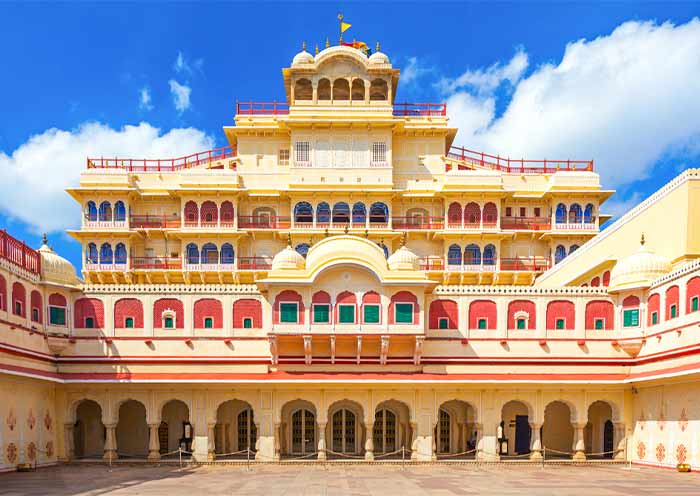

India Travel Visa and Requirements
To travel to India, most foreign nationals require a valid visa. Here are some important details and requirements regarding India travel visas:
- Visa Types: India offers various types of visas based on the purpose and duration of your visit. The most common types include Tourist Visa, Business Visa, and eVisa (available for citizens of eligible countries).
- eVisa: The eVisa facility is available for citizens of over 160 countries. It allows for a shorter and simpler visa application process. It is valid for tourism, business, and medical purposes and has different subcategories based on the duration and number of entries.
- Visa Application: You can apply for an Indian visa through the official website of the Indian Visa Online. The application requires filling in personal details, uploading a recent photograph, and providing passport information.
- Valid Passport: Ensure that your passport is valid for at least six months beyond your planned departure date from India. The passport should also have at least two blank pages for the visa stamp.
How to Get To and Around India
Getting to and around India involves various transportation options, depending on your point of origin, the distance you need to cover, and your preferred mode of travel. Here are some common ways to get to and around India:
Getting to India:
- By Air: The most common and convenient way to reach India from international destinations is by air. Major cities in India, such as Delhi and Mumbai have well-connected international airports.
- By Sea: If you're traveling from nearby countries or regions, you may consider arriving in India by sea. India has several major ports, including Mumbai, Chennai, and Kolkata, which serve as entry points for cruise ships and cargo vessels.
Getting around India:
- Domestic Flights: India has an extensive domestic flight network, making air travel the quickest and most efficient way to cover long distances within the country. Domestic airlines operate flights to major cities and popular tourist destinations.
- Trains: India has one of the largest railway networks in the world, offering an extensive and affordable mode of transportation. Indian Railways connects cities, towns, and remote areas, and it's a popular choice among both locals and tourists. Book train tickets in advance, especially for long-distance journeys.
- Buses: Buses are a common mode of transportation for both short and long distances within India. State-run buses, private operators, and luxury coaches serve various routes. It's advisable to choose reputable operators and consider sleeper buses for overnight journeys.
- Taxis and Auto-rickshaws: Taxis and auto-rickshaws (three-wheeled vehicles) are widely available in cities and towns for local transportation. Make sure to use authorized taxis or negotiate fares in advance. App-based ride-hailing services like Uber and Ola operate in major cities.
When traveling within India, it's essential to consider factors like travel time, distance, comfort, safety, and budget. Plan your transportation options in advance and research the most suitable mode of travel for your specific needs.

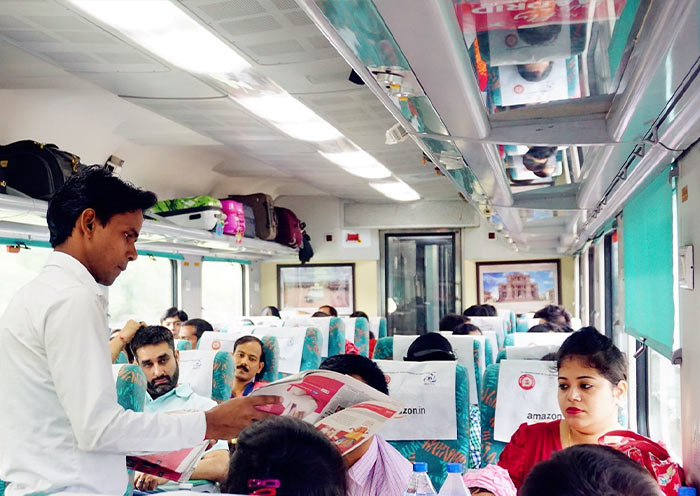
How Much Dose a Trip to India Cost
The cost of a trip to India can vary widely depending on various factors such as the duration of your stay, the level of comfort and luxury you prefer, the destinations you plan to visit, your mode of transportation, accommodation choices, dining preferences, and the activities you wish to undertake.
Usually, a rough estimate for a budget traveler in India could range from $50 to $100 per day, excluding international flights. Mid-range travelers might expect to spend around $150 to $200 per day, while luxury travelers could spend $250 or more per day.
It's advisable to research and plan your trip in detail, including accommodation, transportation, and activities, to get a more accurate idea of the costs involved for your specific itinerary.
Check more detail about India Trip Cost >>
Independent Travel or Private Guided Tour
Independent Travel:
- Flexibility: Independent travel allows you to have complete control over your India itinerary, allowing you to explore at your own pace and make spontaneous decisions along the way.
- Personalization: You can tailor your trip according to your interests, spending more time in the places that captivate you and skipping those that don't appeal to you as much.
- Freedom: Independent travel allows for greater freedom in choosing accommodations, dining options, and activities that suit your budget and preferences.
- Cultural Immersion: Traveling independently often leads to more opportunities for interacting with locals, experiencing local customs, and gaining a deeper understanding of the culture.
Private Guided Tour:
- Convenience and Expertise: A private guided tour takes care of all the logistics, including transportation, accommodations, and sightseeing arrangements, saving you time and effort. The tour guide's expertise can enhance your understanding of the destinations, culture, and history.
- Local Insights: A knowledgeable guide can provide valuable insights, local stories, and hidden gems that you might not discover on your own.
- Language and Cultural Barrier: Having a guide who speaks the local language can help overcome language barriers and facilitate communication with locals, ensuring a smoother experience.
- Safety and Security: In unfamiliar surroundings, having a guide can provide an added sense of security, especially in crowded or remote areas.
Ultimately, opting for a private guided tour in India is highly recommended for those seeking a deeper understanding of the country's rich tapestry, with the added benefits of hassle-free planning, safety, and the assurance of an enriching travel experience, all while supporting the local economy and enjoying the convenience of a curated journey tailored to your personal interests.




